The need for web developers has steadily risen with the influx of technological advancements. The U.S. Bureau of Labor Statistics (BLS) estimates that the number of web developer jobs will increase by an average of 8% between 2019 and 2029, with more companies seeking to provide their customers with an online experience.
As more companies invest in digital transformation, artificial intelligence, big data, and other technology-focused initiatives, the demand for development talent has surged to unprecedented levels. IT executives report that over half of them (58 percent) have already increased or plan to increase their investments in emerging technologies.
In today’s competitive job market, a well-crafted resume is a crucial tool for any web developer seeking to stand out and secure their dream job. Your resume serves as your first impression to potential employers and can make or break your chances of landing an interview. As a web developer, your resume not only needs to highlight your technical skills and experience, but also showcase your creativity, problem-solving abilities, and attention to detail.
In this article, we will explore the essential elements of an effective web developer resume and provide tips on how to create a compelling resume that will get you noticed by recruiters and hiring managers. Whether you are an experienced developer looking to update your resume or a newcomer to the field, this guide will help you craft a winning resume that opens doors to exciting career opportunities.
This article will guide you in the following areas:
- Step-by-step process on how to create a web developer resume
- The best practices to consider when drafting your resume
Create a Web Developer Resume: Step-by-Step Guide
The key to creating the perfect resume is understanding what, when, and how each component should be included. While there is no single approach to writing the perfect resume, there are a few guidelines you should consider to help increase your chances of securing the job you are applying for.
The steps for creating a resume are as follows:
Step 1: Review the job description
The first step to writing an excellent resume is understanding the job description. Review the job description and understand what they are looking for.
When reviewing the job description, there are three main things that you should focus on:
- Skills required for the position: Examine the job description to get an idea of the essential skills required. The skills should be listed concisely and must align with your strengths and experience to showcase your suitability for the job.
- Experience required: Most companies usually look for a particular level of experience in any given position. It is thus important to carefully review and understand the minimum experience required to apply for the position. Understanding this will help you craft a more detailed and focused resume.
- Keywords and verb phrases: Looking for the employer’s preferred keywords is essential. These are usually stated in the job description or supporting documents. Understanding the keywords will assist you in creating a more relevant and targeted resume that is easy to read and covers all aspects of your suitability for the position.
Step 2: Learn about the potential employer
To include all the information the employer will need, you must have a thorough understanding of the organization to which you are applying. This can be achieved by visiting online forums, job portals, and the company website. This will help you get an insight into the company and understand its business and objectives, which will be useful for you as you write your resume.
In addition, understanding the company’s history, business, and objectives will help you align your resume with the organization’s values and culture, which is an effective way to highlight your suitability for the position.
Step 3: Choose a format for the resume
There are various formats that you may use for a web developer’s resume. Although all the different formats are geared towards showcasing your skills, responsibilities, and achievements, knowing the most suitable format to use will help set you apart from other applicants.
For instance, if you are a web developer or an IT expert with a consistent employment history, you may consider using a chronological resume format. Consequently, if you want to be an independent consultant or have worked as an independent contractor, you may use the alternative resume format- the functional format. This type of resume will help you clearly emphasize your skills.
You may also opt to use a combination of the two by combining both the chronological and functional aspects to create a hybrid resume. The only thing that matters is doing it correctly and making sure all the necessary components are present.
Step 4: Choose a suitable template
The next step is to find the appropriate template to use after deciding on the format for your resume. A standard template should include all the information required to maximize your chances of getting the job. The template should also be customizable to allow you to add further details, change the overall look, and include sufficient space for your credentials.
Step 5: Include all vital information
Once you have comprehended the job description and identified the information that the company is seeking, the next step is to structure your resume in a manner that showcases the key areas you want to emphasize. This can be achieved by incorporating all the essential information that is required.
Here is a comprehensive list of the vital information that should be included in your resume:
The header of your resume should contain your name, a professional title, a phone number, an email address, and your address. It may also contain a link to your GitHub or LinkedIn account.
EXAMPLE
John Doe
Senior Front-End Developer
Phone: 555-777-555
Email: johndoe@email.net
Address: 524 Rt Street London
GitHub: github.com/johndoe
LinkedIn: John Doe
A strong summary
The resume summary is crucial in convincing an employer that you will be an efficient employee. This section should include your relevant skills and achievements and a short statement about what you have previously achieved to reflect your success and achievements. It may be required that this section be customized depending on the type of position you are applying for. Provide an overview of your experience level in the summary, including how many years you have worked as a web developer.
EXAMPLE
Web developer with 5 years of Python, Django, and database experience. Proven ability to work as a team member and independently on multiple projects. Skilled in front-end UI development, database design, troubleshooting and debugging full stack development (HTML to CSS), search engine optimization, and content management system configuration.
Include your employment history
The employment history section of your resume should include your job title, company name, dates of employment, job responsibilities, achievements, company details, and any additional relevant information. It is important to focus on the most recent and relevant roles, and use concise and clear language. Highlight your accomplishments and quantify them wherever possible to make this section impactful and compelling. Tailor your employment history to align with the requirements of the job you are applying for.
EXAMPLE
Senior Web Developer
ABC Company, London.
June 2014- July 2018
- During my 4 years at ABC Company, I was responsible for leading and managing the web development project for a global retail company.
- My strengths included technical expertise in HTML5 & CSS3, AngularJS, Python knowledge, Backbone.js integration, and designing front-end web applications using modern user interface design principles.
tip
If you are applying for an entry-level position and do not have work experience to include, create a qualifications section that highlights all the courses you have taken and relevant certificates or qualifications you have obtained. You may also mention any publications, conferences, developer meetups, and hackathons you have attended.
Include an education section
Your education section should include all your educational qualifications and details of the study, including the name of the institutes, the duration of the study, and other academic achievements. The knowledge you have gained from your studies is essential in demonstrating that you are properly trained and qualified for the job. You can also include relevant awards in this section. The courses you took are crucial because they demonstrate your enthusiasm and commitment to advancing your knowledge, as well as your potential to exhibit greater creativity than someone who did not take them.
EXAMPLE
- 2010-2013 Harvard University, Master of Applied Computer Engineering
- 2006-2009 Harvard University, Bachelor of Information Technology
Skills section
The skills section of your resume is a crucial component that showcases your technical abilities and expertise as a web developer. The skills section of your resume is an essential component that highlights your capabilities as a web developer. It encompasses both technical skills, such as proficiency in programming languages, frameworks, databases, and tools, as well as soft skills, which encompass non-technical qualities that are valuable in a professional environment.
Including a well-curated list of skills in your resume can demonstrate your expertise and qualifications, showcasing your technical prowess and interpersonal abilities as a web developer. Make sure to tailor your skills section to match the specific requirements of the job you are applying for and provide evidence of how you have utilized these skills in your previous experiences.
EXAMPLE
Technical Skills
Front-end Technologies: HTML5, CSS3, JavaScript (ES6+)
Front-end Frameworks/Libraries: React, Angular, Vue, Bootstrap, jQuery
Back-end Technologies: Node.js, Express.js, Django, Ruby on Rails
Databases: MySQL, MongoDB, PostgreSQL, SQLite
Version Control Systems: Git, SVN
Integrated Development Environments (IDEs): Visual Studio Code, Sublime Text
Web Design: UI/UX design, responsive web design, cross-browser compatibility
Server-side Scripting: PHP, Python, Ruby
Testing and Debugging: Unit testing, browser developer tools
CMS Platforms: WordPress, Drupal, Joomla
Agile/Scrum Methodology: Experience working in Agile/Scrum development environments
Cross-functional Collaboration: Collaboration with designers, QA, and other team members
Troubleshooting and Problem-solving: Identifying and resolving technical issues in web applications
Continuous Integration/Deployment (CI/CD): Jenkins, Travis CI, deployment pipelines
Soft Skills
- Time management
- Negotiation skills
- Enthusiasm
- Creativity
- Communication
- Patience
- Leadership
- Collaboration
- Adaptability
- Empathy
- Teamwork
tip
To increase your chances of getting the job you are applying for, make sure to critically think about the skills you want to include in your resume, make sure that the skills correspond to what the employer is looking for, and make sure that the achievements, duties, and responsibilities you have listed are in line with them.
Include other sections (if needed)
Depending on the job you are applying for, the potential employer may request that you include additional sections such as activities, badges, interests, language competency, and awards. Make sure to include all the sections requested so that your resume reflects your full capabilities.
Step 6: Proofread and edit before sending
Finally, once you have finished formatting your resume correctly and ensured that all the essential information is included, the next step is to review each section carefully and ensure that it meets all the requirements. Make sure your resume is clear and concise by reading it from beginning to end and checking if there are any spelling or grammar errors in your document.
Free Templates
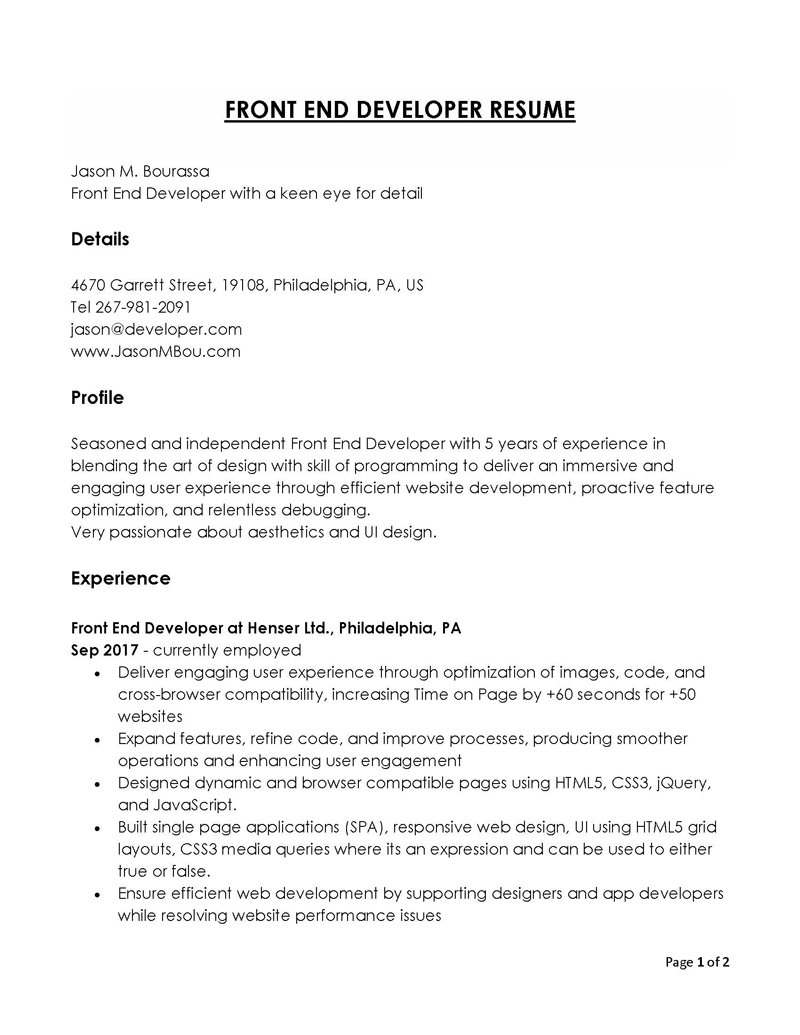
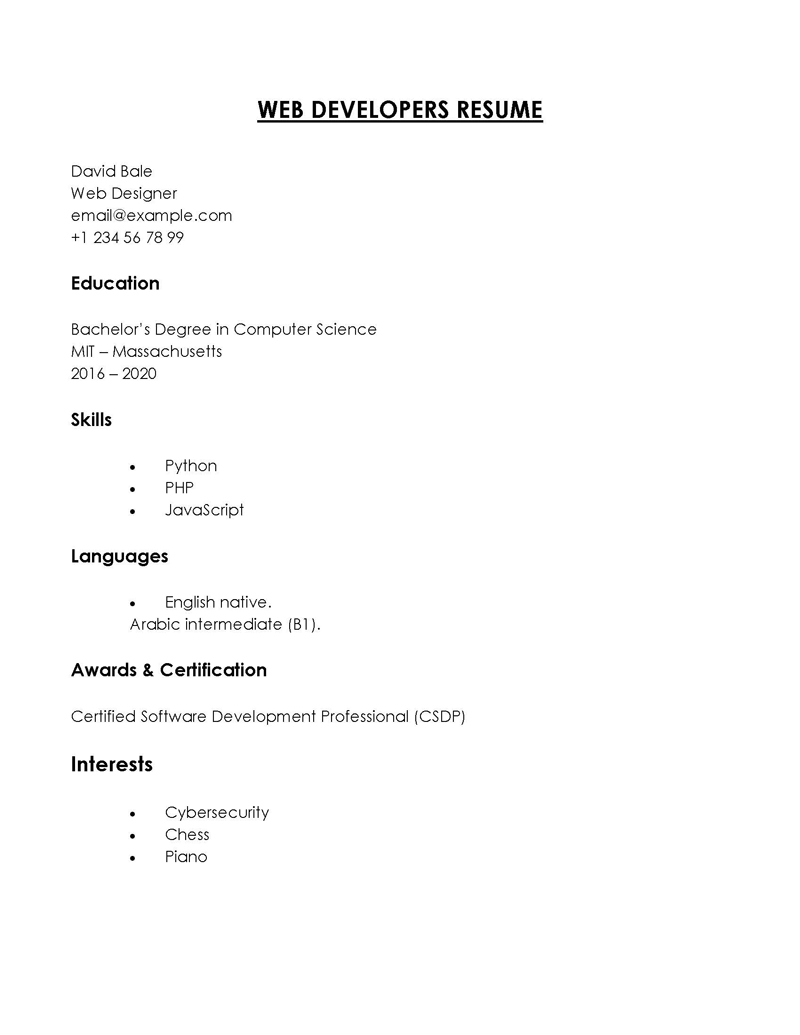
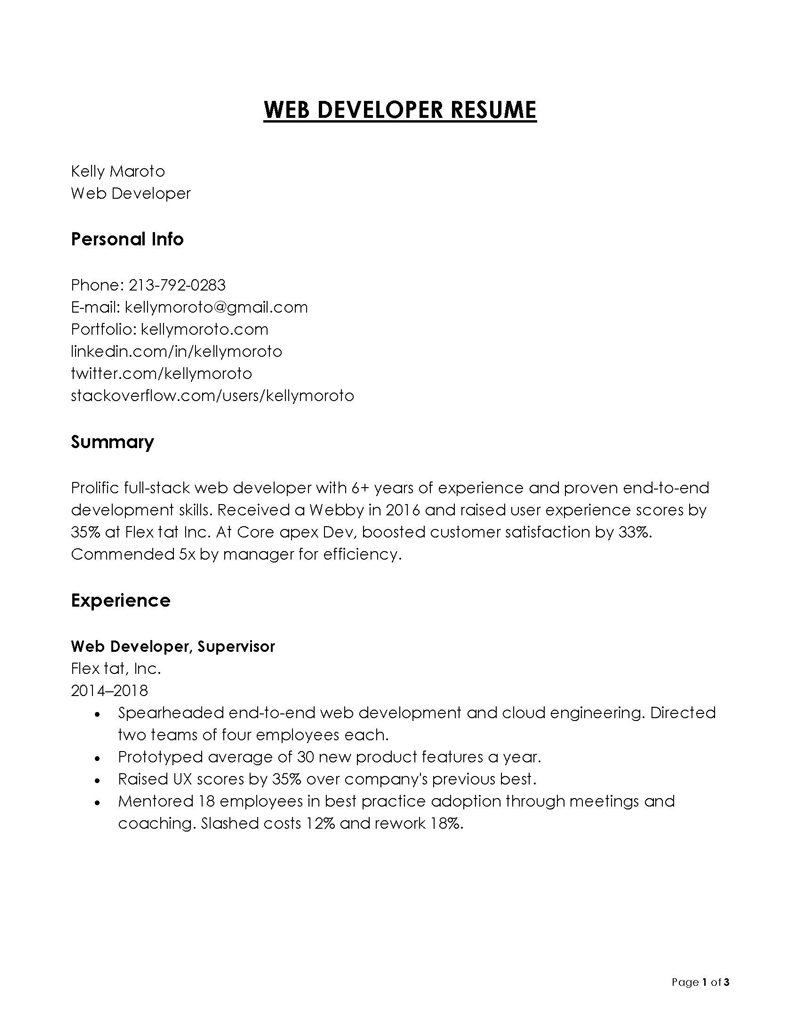
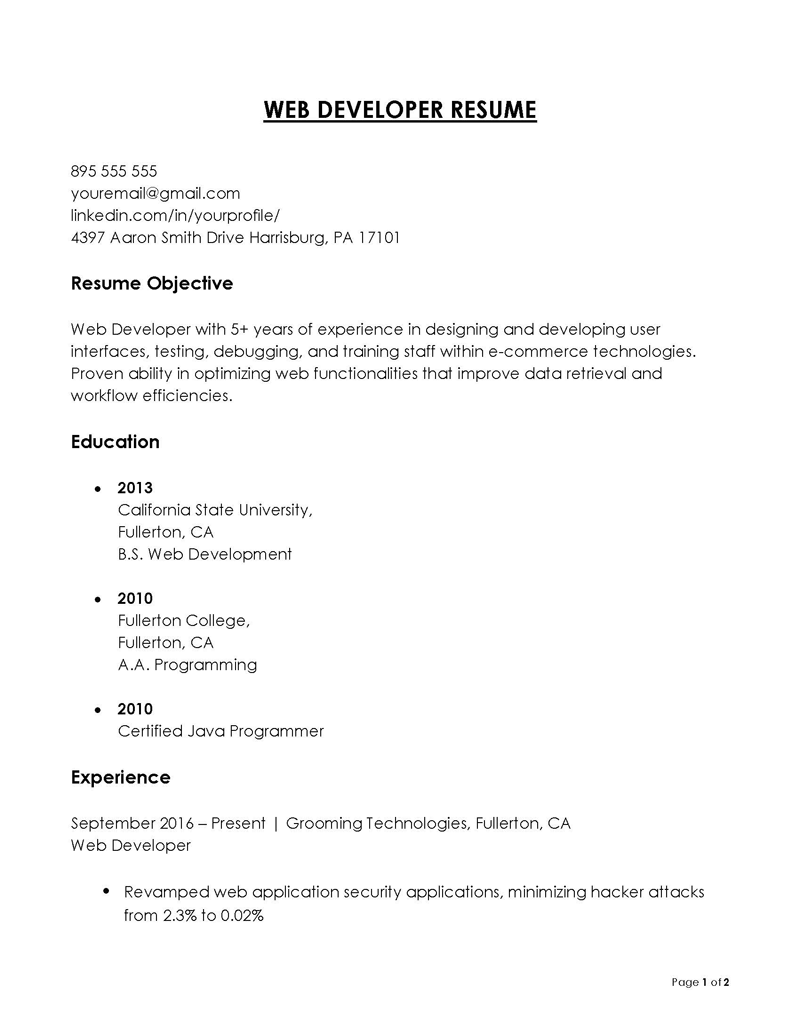
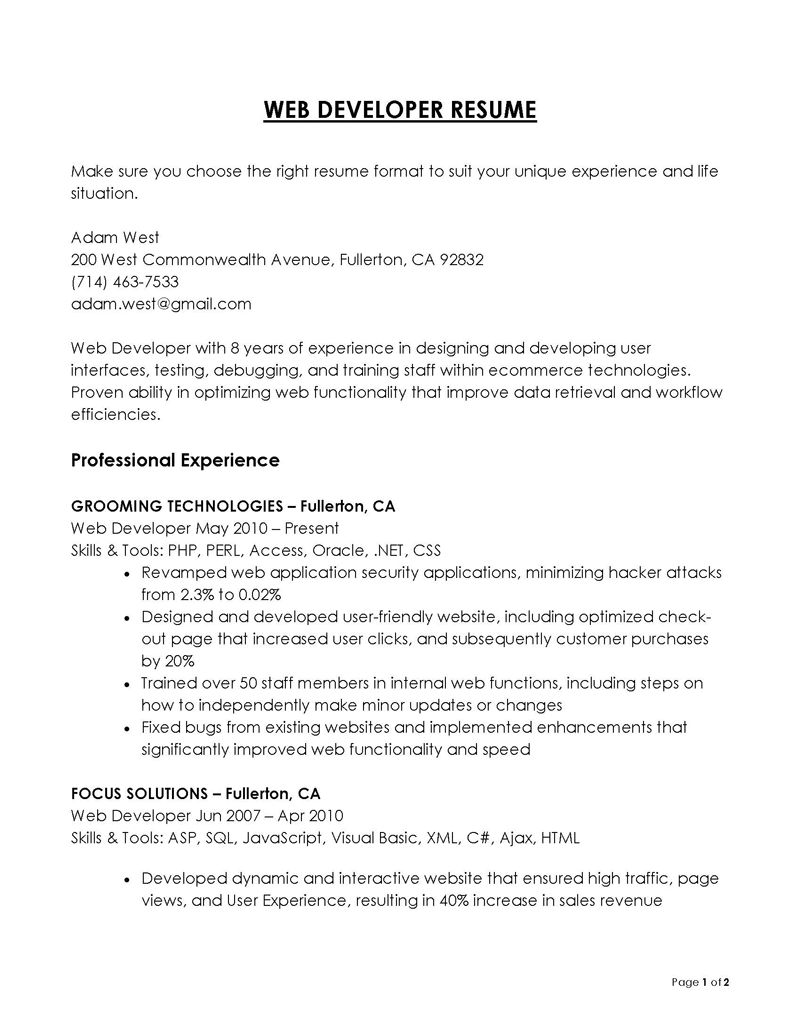
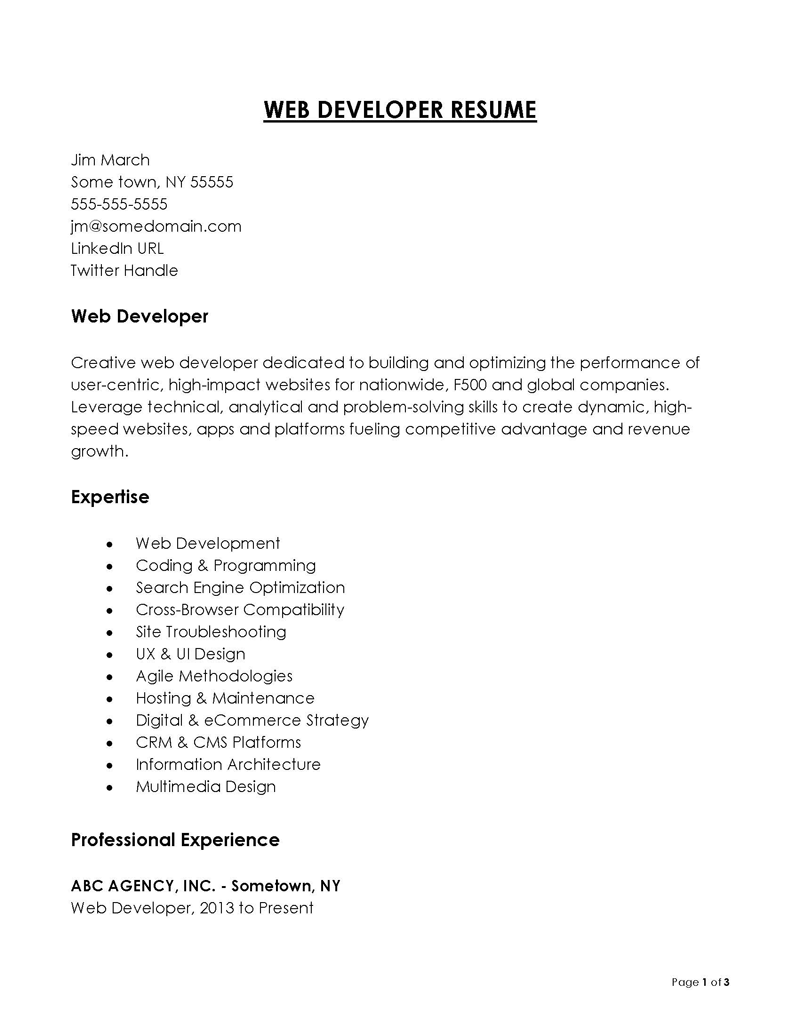
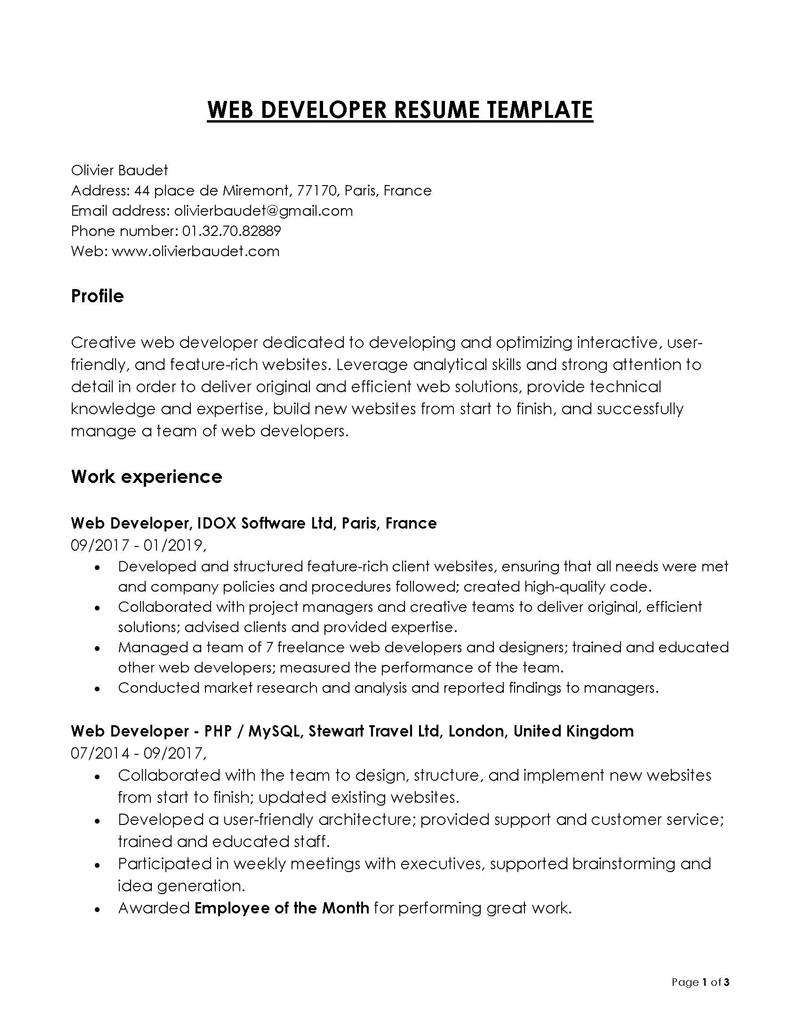
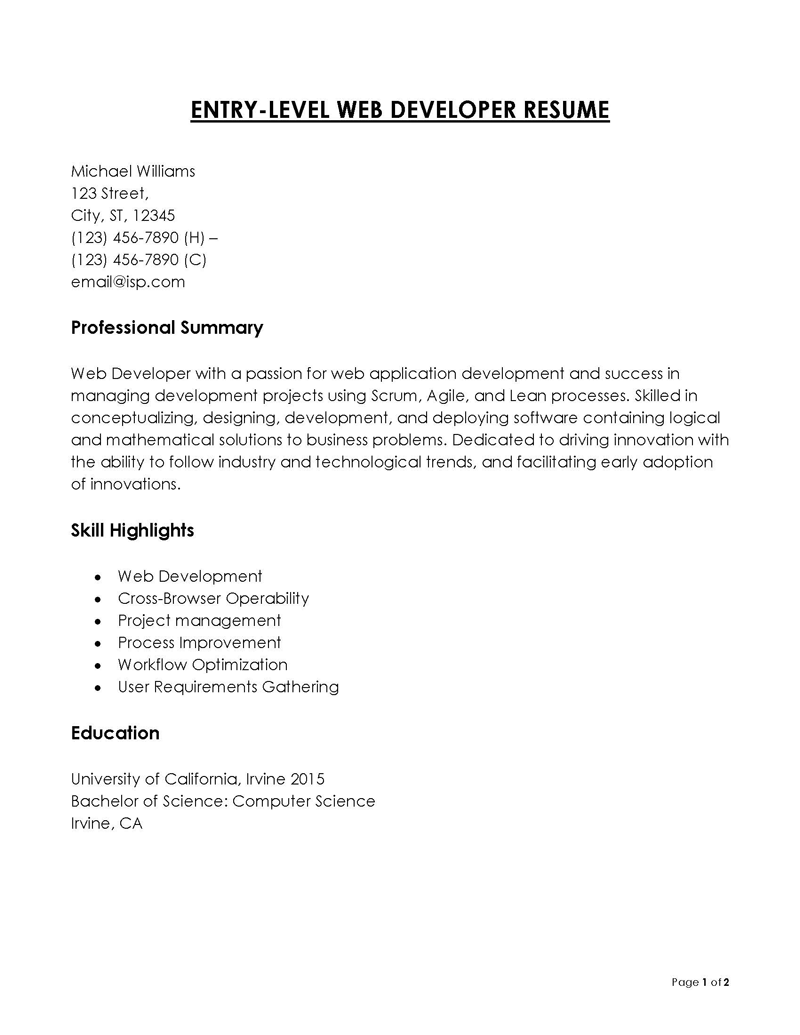
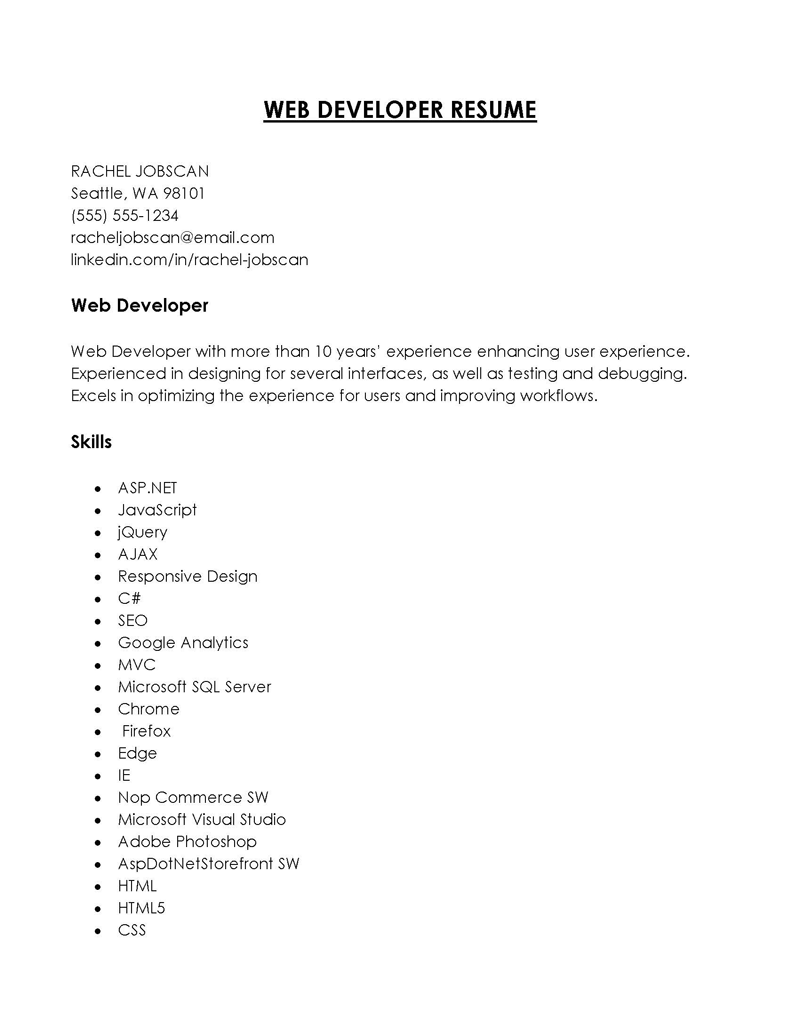
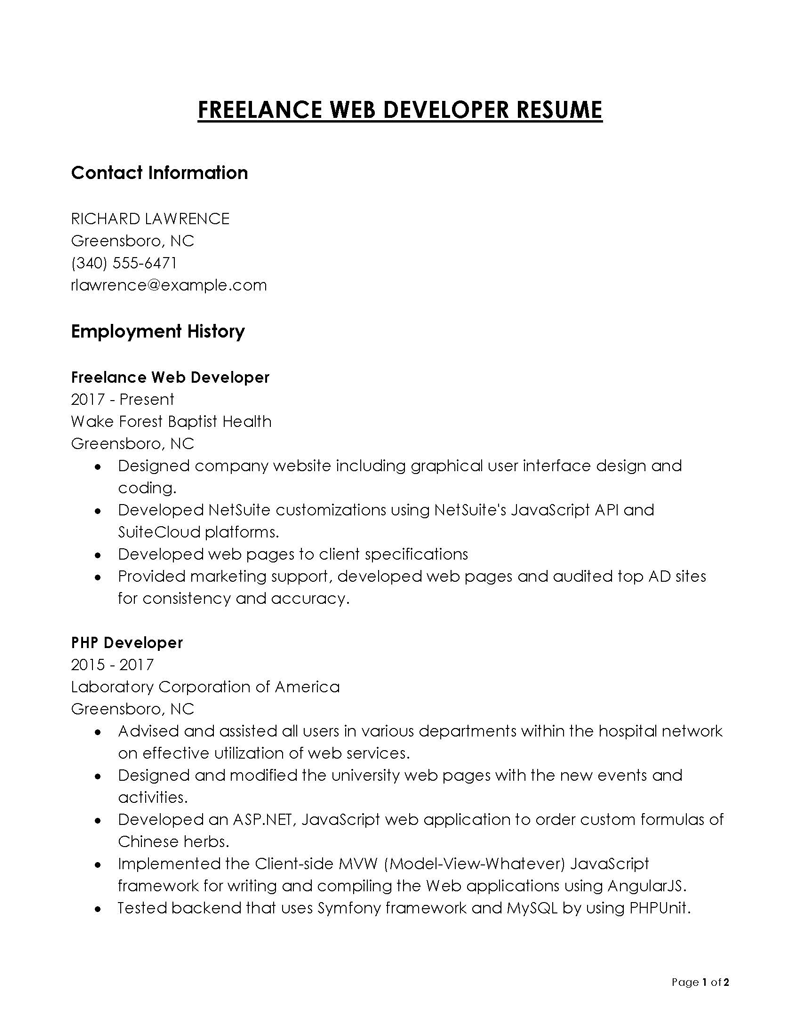
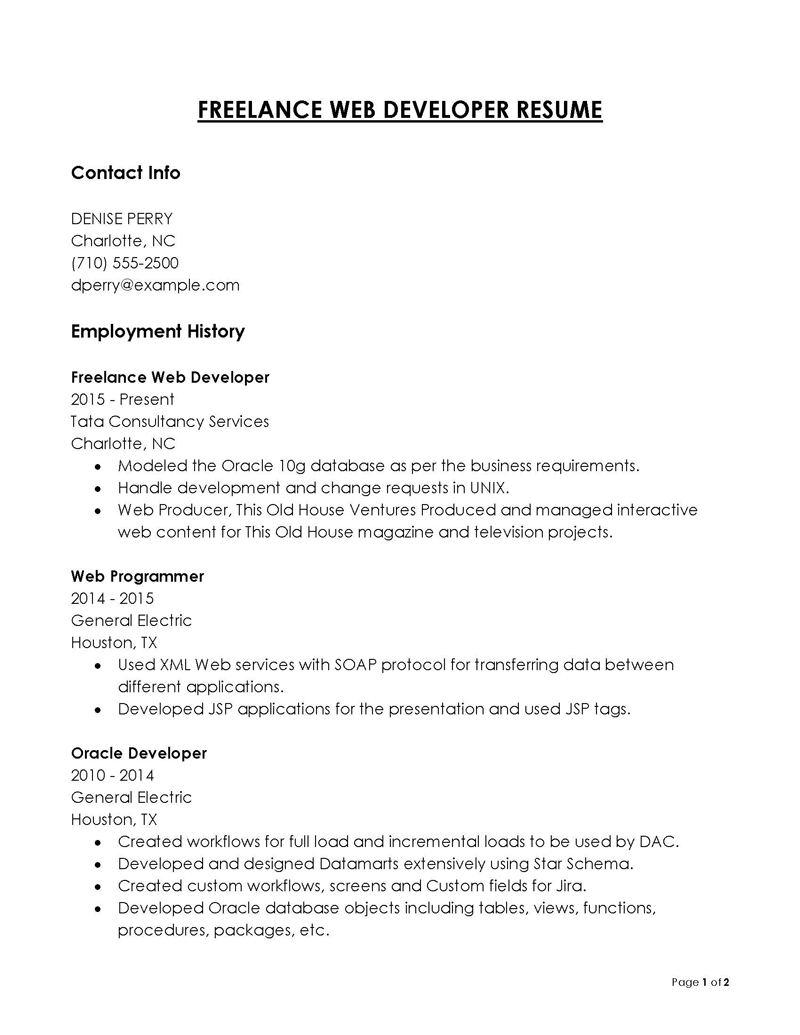

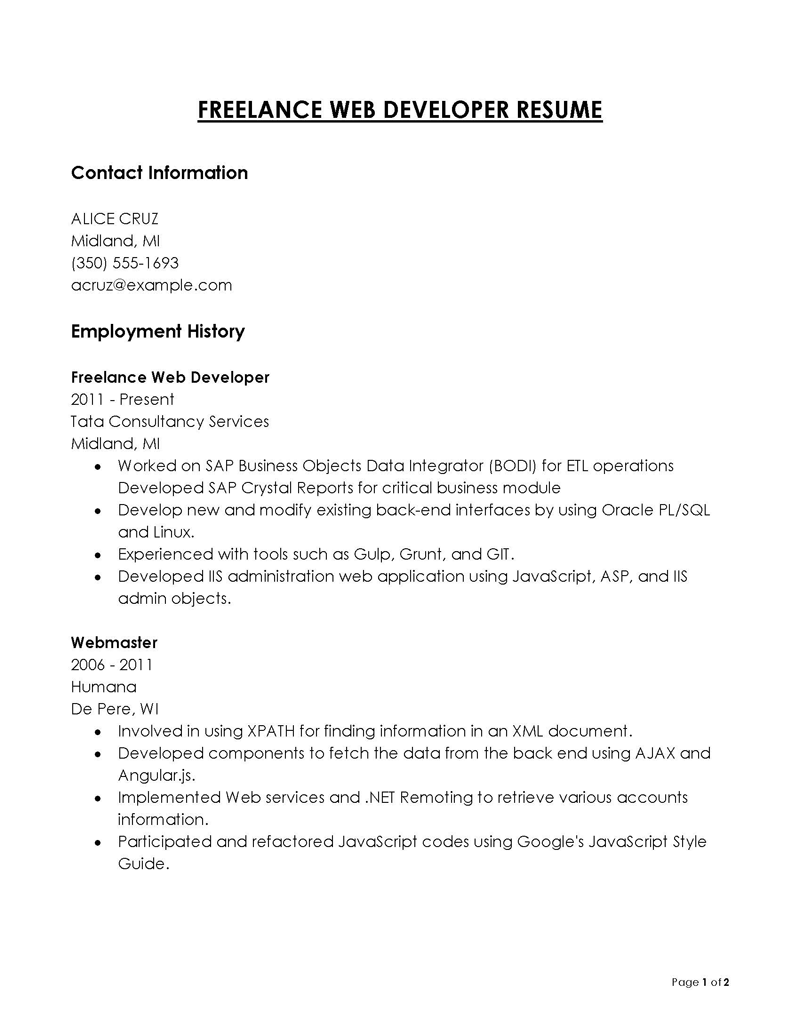
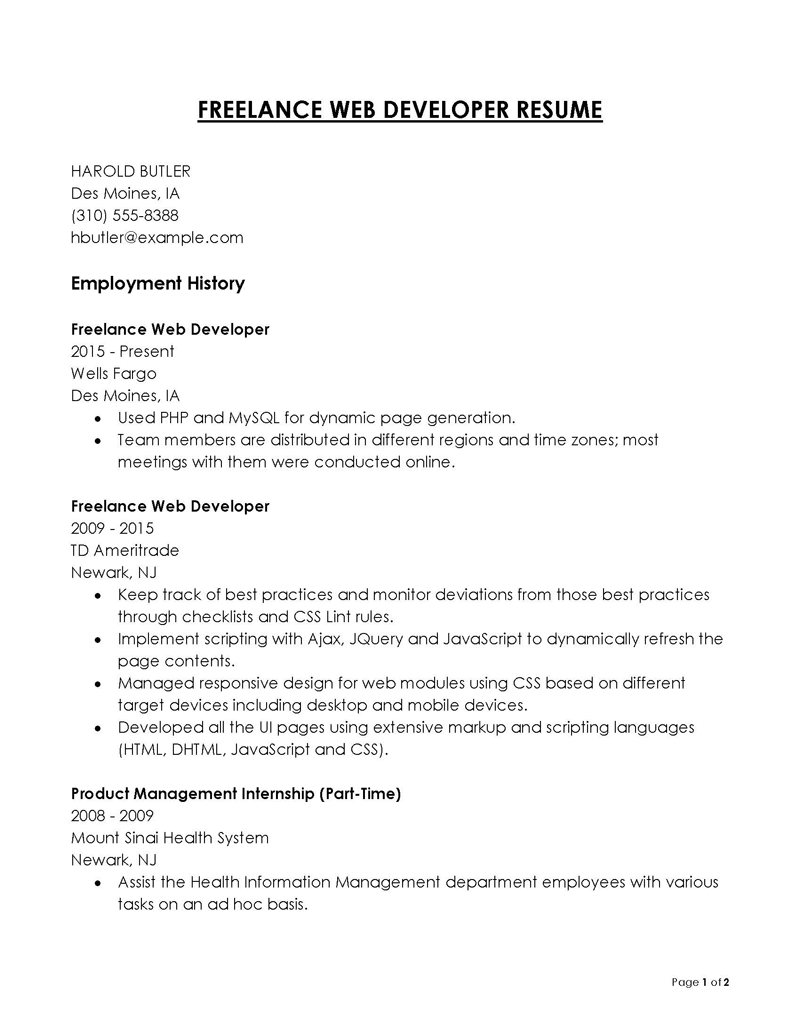
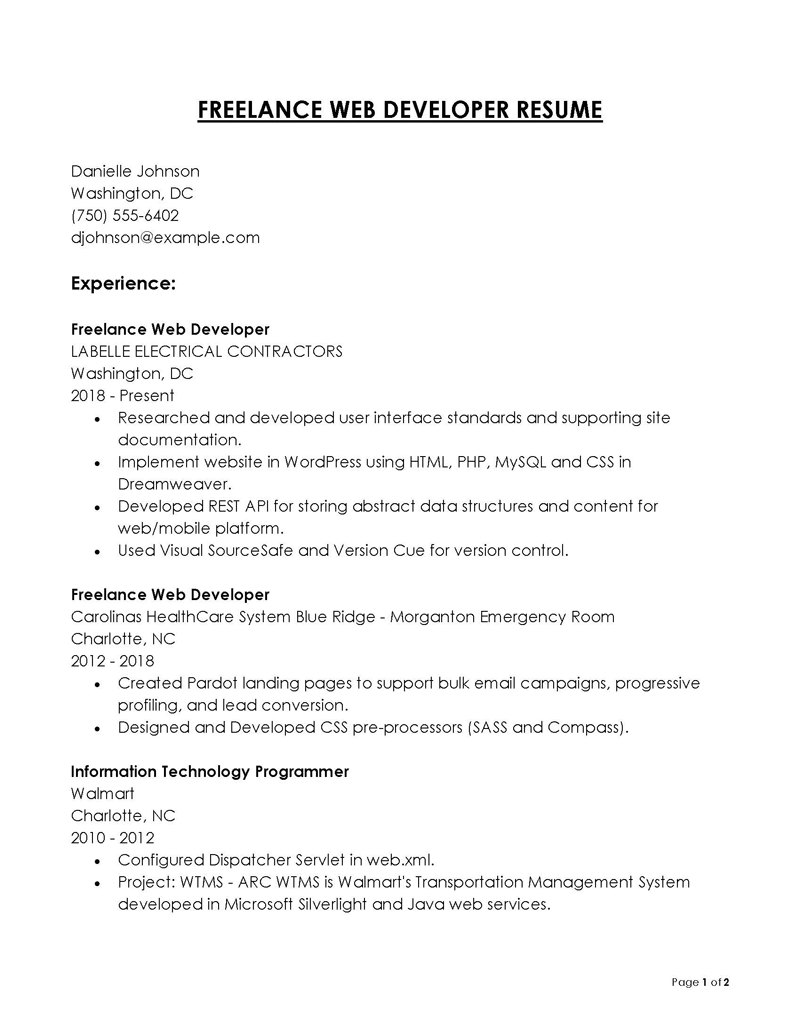
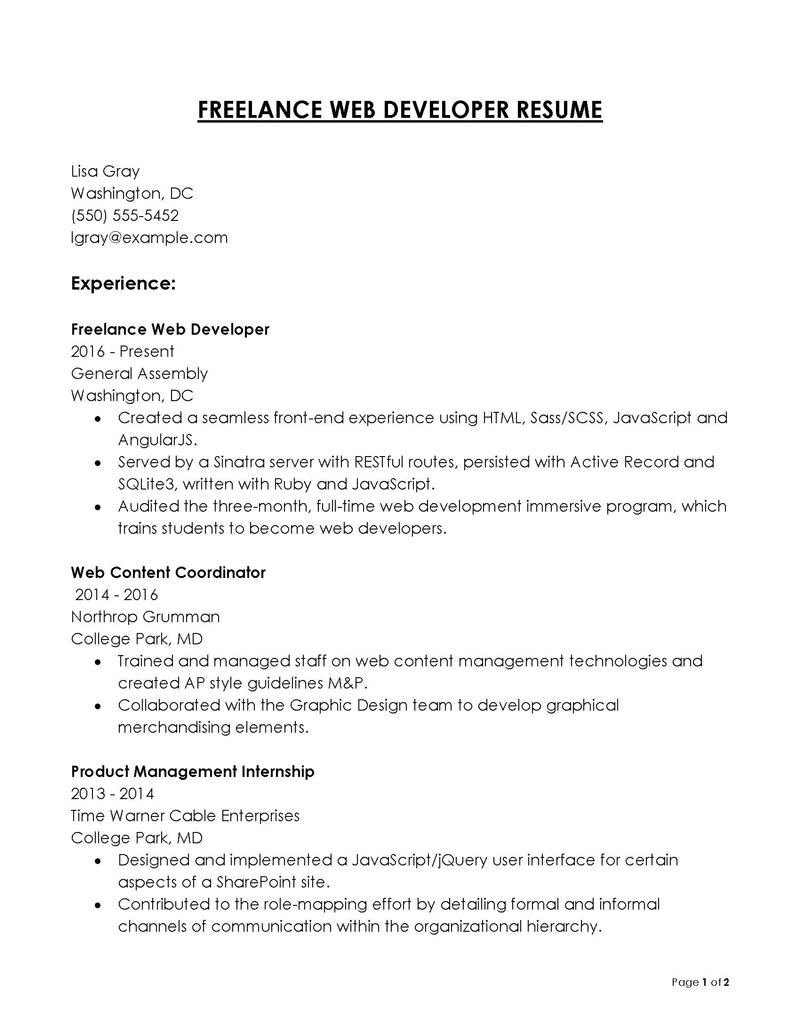

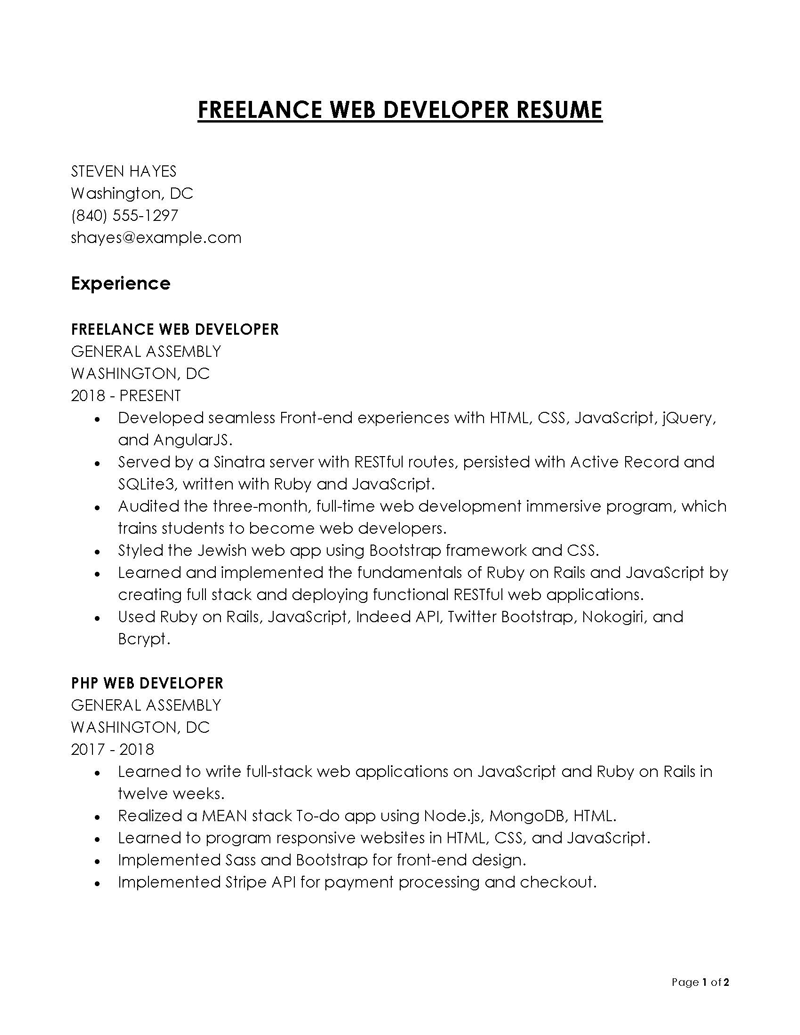
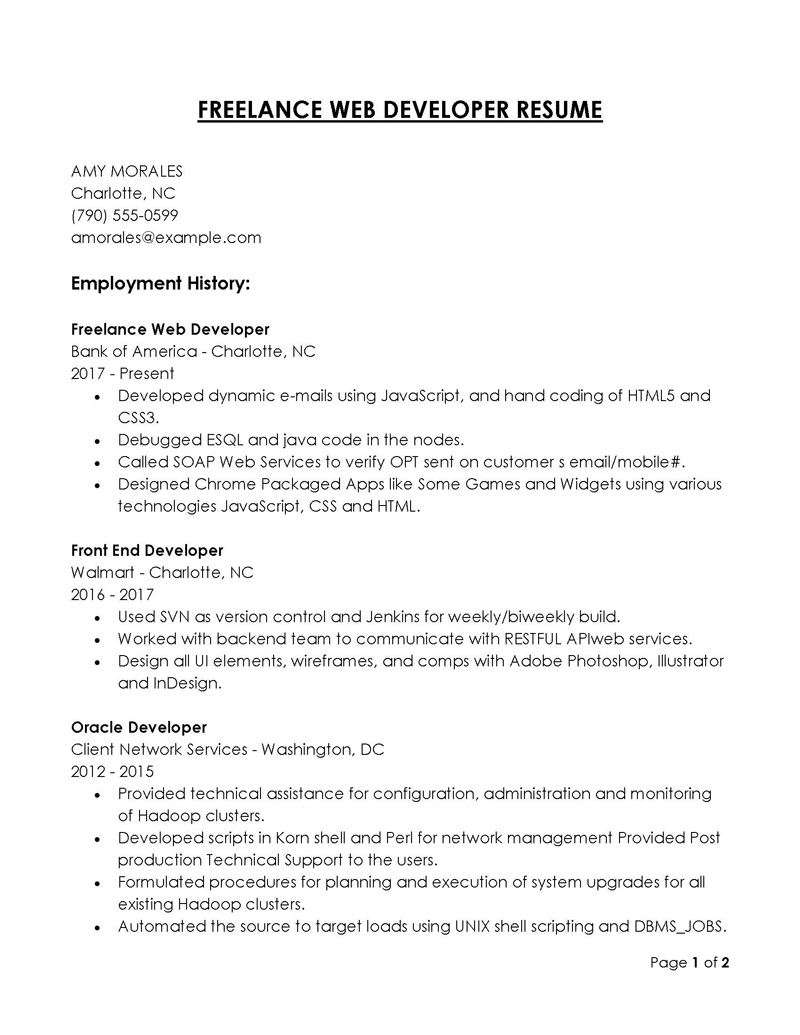
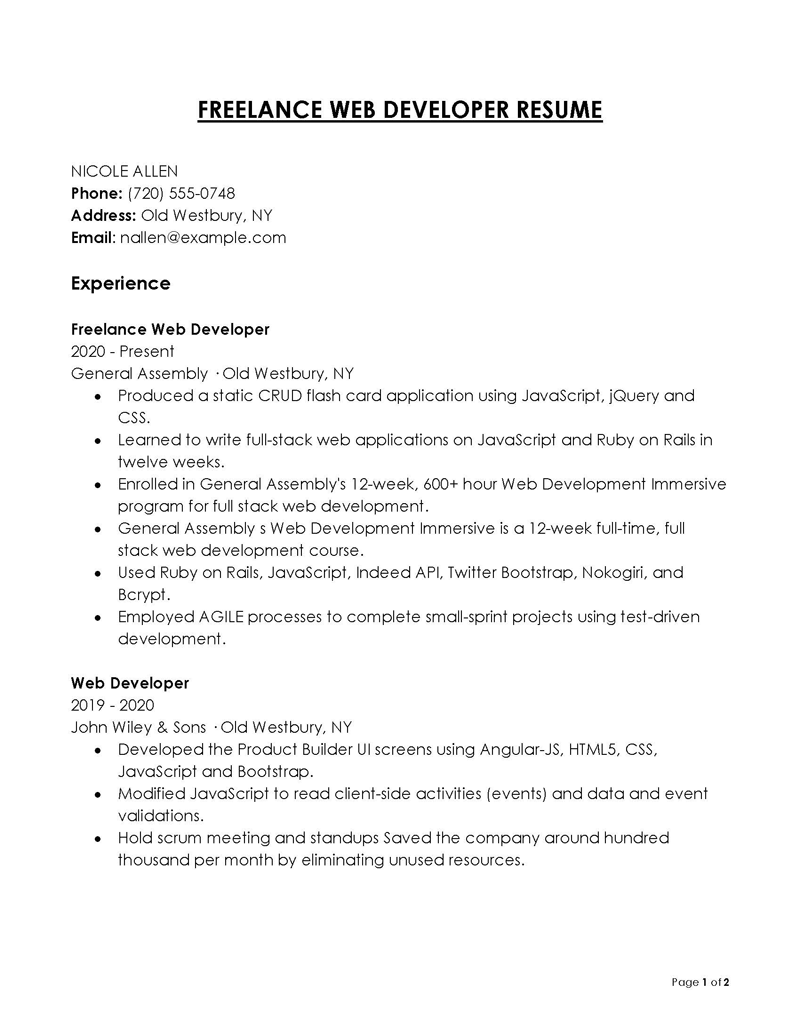
Best Practices to Consider
There are several effective practices you can consider to help ensure your resume stands out and captures the employer’s attention.
These include:
Quantify your impact wherever needed
Employers know that you must have strong knowledge and skills to do the job, but they also want to see that you have been able to contribute something valuable. Quantification is effective when trying to prove a point or highlight your value and impact. You can quantify using a number, percentage, or dollar figure whenever possible. When quantifying, use numbers relevant to the company’s work or industry and your role.
ATS compliant
Most employers nowadays use Applicant Tracking Systems (ATS) to review applications and shortlist the most suitable candidates. ATS automatically scans resumes for keywords that match the job description. Research the job posting and company to identify the specific technical skills, programming languages, frameworks, and tools they are looking for, and incorporate them into your resume.
Provide context for the experience
Quantification helps you make your experience more meaningful, but it is essential that the employer also knows how you impact the company. To give context, describe each achievement and be specific about the results.
EXAMPLE
Instead of saying, “Developed a new CMS system,” you should say, “Developed a new CMS system for the client that increased productivity by 20%, reduced downtime to 5%, and cut down their IT support costs by 30%.”
Brevity
Keep your resume concise and focused. Avoid lengthy paragraphs or irrelevant information. Use bullet points, headings, and appropriate formatting to make your resume easy to read and scan. Stick to the most relevant experiences and achievements, and avoid including unnecessary details that do not add value to your application.
Customize each resume
Many candidates make the mistake of sending the same resume to multiple employers without tailoring it to each job. Therefore, never send a generic resume! The more customized your resume is, the better and more successful you are at getting the job.
Keep it concise and visually appealing
When sending your resume, you want to project a professional image that is consistent with the employer’s expectations and standards. Choose fonts and colors that are readable and consistent with the industry. Ensure the resume design is simple and clean to capture the employer’s attention.
Incorporate action verbs
Use strong action verbs to describe your accomplishments and responsibilities in your past roles. Action verbs, such as “developed,” “designed,” “implemented,” “optimized,” “managed,” “collaborated,” “led,” and “achieved,” convey a sense of proactivity and accomplishment. Quantify your achievements wherever possible by using numbers, percentages, or other metrics to showcase the impact of your work.
Conclusion
Understanding how to create a resume is not just about contact details and work history. Instead, it is about understanding how to successfully highlight your experience and critical skills, which will significantly increase your chances of getting the job. The format you choose will determine the style and design of your resume, and it is essential to use one that suits you best and allows you to add relevant information. The best way to select the correct format is to understand the job description and then write your resume accordingly. It is also essential to proofread it multiple times before submitting it to ensure that it is free of any grammar or syntax errors.








